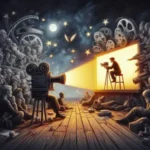In an industry that has the power to shape narratives and influence culture, Hollywood has long been scrutinized for its lack of diversity both in front of and behind the camera.
As audiences become increasingly aware of the stories that are being told—and, perhaps more importantly, the stories that are being excluded—the call for a richer, more inclusive representation in film and television has never been more urgent. “Beyond the Silver Screen: The Imperative of diversity in Hollywood” delves into the critical need for varied voices and perspectives in a medium that mirrors the tapestry of our society. This blog post explores not only the reasons why diversity matters, but also the transformational impact it can have on storytelling, audience engagement, and the industry as a whole. Join us as we unpack the barriers that remain and celebrate the strides being made, emphasizing that true representation is not just a trend, but a necessity for a vibrant and authentic cinematic landscape.
1. Introduction: The Current Landscape of Diversity in Hollywood
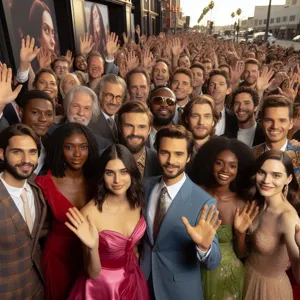
The glimmering allure of Hollywood has long captivated audiences worldwide, but beneath the surface of its glamorous veneer lies a complex landscape shaped by both progress and persistent challenges regarding diversity. In recent years, the industry has made notable strides towards inclusivity, driven by a growing recognition that diverse storytelling enriches the cinematic experience. We’ve witnessed a surge of films and television shows that reflect a broader spectrum of voices, encompassing various races, ethnicities, genders, and sexual orientations. From the groundbreaking success of films like *Black Panther* to the rise of streaming platforms championing underrepresented creators, the call for diversity is louder than ever.
However, despite these advancements, the journey towards true representation remains fraught with hurdles. Behind the scenes, decision-makers often lack the diversity that is increasingly visible on screen, leading to narratives that can sometimes misrepresent or oversimplify complex cultures and experiences. The disparity in opportunities for writers, directors, and producers from marginalized backgrounds highlights a systemic issue that requires urgent attention. Furthermore, while audiences have embraced diverse content, the industry still grapples with the challenge of sustaining this momentum and ensuring that diversity is not merely a trend but a foundational element of storytelling.
In this blog post, we will explore the current state of diversity in Hollywood, examining both the positive developments and the ongoing obstacles. We aim to highlight the imperative of fostering an inclusive environment that not only reflects the rich tapestry of human experience but also drives the industry towards a more equitable future. As we delve into the intricacies of representation, we will uncover why diversity is not just a moral obligation; it is essential for the artistic and commercial vitality of Hollywood itself.
2. Historical Context: A Brief Overview of Representation in Film
To fully grasp the current landscape of diversity in Hollywood, it’s essential to reflect on the historical context of representation in film. From the inception of cinema in the late 19th century, the industry has often mirrored societal norms and biases, resulting in a predominantly white, male-centric narrative. Early films frequently relegated people of color and women to stereotypical roles, if they were included at all. Characters of diverse backgrounds were often depicted in ways that reinforced harmful stereotypes, with Black actors often cast in roles as servants or criminals and Asian characters portrayed as exoticized caricatures.
As the decades progressed, the civil rights movements of the 1960s and 1970s ignited a call for change, but transformation was slow. The emergence of blaxploitation films in the 1970s, while offering some representation, often fell into the trap of exaggerating stereotypes rather than providing nuanced portrayals. The 1980s and 1990s saw incremental improvements, with more films featuring diverse casts, yet these stories were often told through the lens of the dominant culture, leaving many voices unheard.
The dawn of the 21st century marked a pivotal shift, as filmmakers and audiences alike began to demand more authentic representation. Movements advocating for inclusivity gained momentum, culminating in a surge of films that celebrated diverse narratives and characters. From the critical acclaim of films like “Black Panther,” which showcased a predominantly Black cast and crew, to “Crazy Rich Asians,” which highlighted Asian culture in a mainstream romantic comedy, audiences have responded positively to these fresh perspectives.
However, the journey towards true diversity in Hollywood is ongoing. While strides have been made, systemic issues remain entrenched within the industry, and representation still lags behind in many areas. Understanding this historical context not only sheds light on the battles fought for representation but also underscores the urgency of continuing to push for a more inclusive cinematic landscape. As we navigate this complex terrain, it’s clear that every story matters, and a diverse Hollywood enriches the narrative fabric of our shared experiences.
3. The Importance of Diverse Storytelling
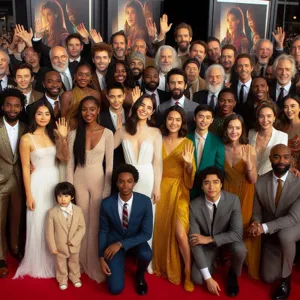
Diverse storytelling is not just a buzzword; it’s an essential pillar that fortifies the very foundation of the entertainment industry. In a world that is beautifully varied in culture, race, gender, and experience, the stories we tell must reflect that tapestry of humanity. When Hollywood embraces diverse storytelling, it opens the door to richer narratives that resonate with a wider audience, fostering empathy and understanding among viewers from different backgrounds.
Consider how diverse storytelling allows for the exploration of unique perspectives and experiences that have been historically marginalized. It provides a platform for voices that have long been silenced, enabling the industry to break free from the confines of clichéd tropes and one-dimensional characters. By weaving in the experiences of various cultures, genders, and identities, filmmakers can create multifaceted characters that audiences can connect with on a deeper level. This not only enhances the emotional weight of the story but also allows viewers to see themselves reflected in the narratives.
Moreover, diverse storytelling has the power to challenge societal norms and spark conversations around important social issues. Films and shows that tackle themes of race, gender identity, mental health, and more can educate audiences, dismantling prejudices and fostering a more inclusive society. As viewers engage with these stories, they are encouraged to reflect on their own beliefs and attitudes, promoting understanding and acceptance.
The success of films and series that highlight diverse storytelling cannot be overlooked. Projects like “Black Panther,” “Crazy Rich Asians,” and “Pose” have proven that audiences are hungry for varied narratives that challenge the status quo. These productions not only perform well at the box office but also contribute to cultural shifts, inspiring future generations of storytellers.
In essence, the importance of diverse storytelling in Hollywood transcends mere representation; it is about authenticity, connection, and the celebration of the human experience in all its forms. By prioritizing these narratives, the industry not only enriches its offerings but also plays a crucial role in shaping a more inclusive and understanding world.
4. Case Studies: Successful Diverse Films and Their Impact
In recent years, the push for diversity in Hollywood has not only transformed narratives but has also reshaped box office dynamics. Case studies of successful diverse films illustrate how inclusive storytelling can resonate deeply with audiences and drive significant financial success.
Take, for example, *Black Panther*, directed by Ryan Coogler. Released in 2018, this Marvel blockbuster made history by showcasing a predominantly Black cast and a narrative rooted in African culture. The film grossed over $1.3 billion worldwide, proving that diverse stories can attract broad audiences. Beyond its commercial success, *Black Panther* ignited conversations about representation in media, inspiring a new generation of filmmakers and fans to embrace narratives that reflect a wider spectrum of experiences.
Similarly, *Crazy Rich Asians*, based on Kevin Kwan’s bestselling novel, shattered stereotypes and broke new ground in 2018 by featuring an all-Asian cast in a major Hollywood production. The film not only achieved phenomenal box office success, grossing over $238 million globally, but it also sparked a renewed interest in Asian stories and talent within the industry. The critical acclaim and cultural significance of *Crazy Rich Asians* opened doors for other diverse narratives, encouraging studios to invest in projects that celebrate different cultures.
Moreover, animated films like *Coco* have also demonstrated the power of diverse representation. By delving into Mexican traditions and the Day of the Dead celebration, *Coco* resonated with audiences both domestically and internationally, earning over $800 million and winning the Oscar for Best Animated Feature. This film not only entertained but also educated viewers about a rich cultural heritage, showcasing how diversity can enrich storytelling in unexpected ways.
These case studies reinforce the idea that diverse films are not just a trend but a powerful movement within Hollywood. They highlight the importance of representation, not only for the sake of inclusion but also for the substantial impact it can have on box office performance and cultural conversations. As the industry continues to evolve, the success of these films serves as a reminder that diverse storytelling is not just a moral imperative but also a strategic advantage in an increasingly global market.
5. The Role of Writers and Directors in Shaping Narratives
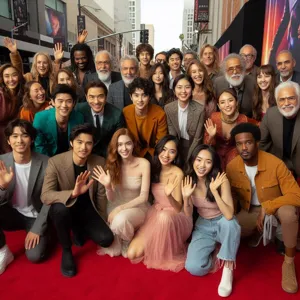
In the intricate tapestry of Hollywood, writers and directors serve as the architects of storytelling, wielding immense power to shape narratives that resonate with audiences. Their unique perspectives and creative visions play a crucial role in determining not only the themes and messages conveyed on screen but also the diversity of voices represented within those stories.
Writers, often the unsung heroes of the film industry, craft the scripts that form the backbone of any production. Their ability to infuse authenticity into characters and plots is essential for creating relatable and engaging content. When writers from diverse backgrounds contribute their experiences and cultural insights, they enrich narratives, allowing for a more expansive portrayal of the human experience. This inclusion not only broadens the spectrum of stories told in Hollywood but also fosters a deeper connection with audiences who see their own lives reflected on screen.
Directors, on the other hand, are responsible for bringing these narratives to life. Their vision guides every aspect of production—from casting choices and cinematography to the emotional tone and pacing of the film. A director’s understanding of diverse cultures can lead to a more nuanced storytelling approach, ensuring that characters are not only portrayed accurately but also celebrated for their unique backgrounds. When directors prioritize inclusivity in their projects, they create a ripple effect, inspiring future generations of filmmakers to embrace diversity in their own work.
Moreover, the collaboration between writers and directors is vital in creating authentic representations of marginalized communities. When both roles are filled by individuals who understand and empathize with the stories being told, the resulting films can break stereotypes and challenge societal norms. This collaborative effort paves the way for a richer, more inclusive cinematic landscape that reflects the true diversity of the world we live in.
In essence, the empowerment of writers and directors from varied backgrounds is instrumental in shaping narratives that not only entertain but also educate and inspire. By championing diversity in these key creative roles, Hollywood can move beyond tokenism, creating films that resonate deeply with audiences and spark meaningful conversations about identity, culture, and representation. As we advocate for a more inclusive industry, we must recognize the profound impact that diverse writers and directors have in crafting the stories that define our shared cultural experience.
6. Behind the Scenes: Hiring Practices and Diversity Initiatives
Behind the scenes, the hiring practices within Hollywood play a pivotal role in shaping the stories that unfold on our screens. As the industry grapples with its historical lack of representation, a growing number of studios and production companies are recognizing the urgency of implementing diversity initiatives that extend beyond mere tokenism.
A commitment to diversity in hiring is not just a moral imperative; it enriches the storytelling process by bringing a multitude of perspectives that reflect the rich tapestry of society. This can be seen in the recent pushes for more inclusive casting, hiring of diverse directors, writers, and crew members, and the establishment of mentorship programs aimed at fostering talent from underrepresented communities.
Companies are now actively seeking to break down the barriers that have traditionally sidelined minority voices. For instance, initiatives like diversity audits are becoming commonplace, where studios assess the demographics of their hiring practices and set measurable goals for improvement. This systematic approach ensures that diversity isn’t just an afterthought but an integral part of the production process.
Moreover, many organizations are partnering with advocacy groups to create scholarships and internship programs targeted at underrepresented groups. Such initiatives not only provide opportunities for aspiring filmmakers and artists but also help cultivate a new generation of storytellers who can bring their unique experiences to the forefront.
As audiences increasingly demand authenticity and representation in the narratives they consume, the pressure is mounting for Hollywood to not only reflect the diversity of its viewers but to also foster an inclusive environment behind the scenes. The industry must embrace this transformative moment, recognizing that a diverse workforce is essential for creating films and television shows that resonate with and inspire everyone. In doing so, Hollywood can take a significant step toward a more equitable future, where every voice has a chance to be heard.
7. The Audience Perspective: Why Diversity Matters to Viewers
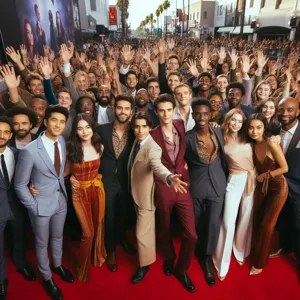
In today’s world, audiences are not just passive consumers of content; they are active participants who seek representation and authenticity in the stories being told. The demand for diversity in Hollywood extends beyond mere numbers; it’s about the richness of experience and the validity of voices that resonate with a wide range of viewers. When films and television shows reflect the myriad backgrounds, cultures, and identities of their audiences, they foster a sense of belonging and validation that is crucial in an increasingly globalized society.
Diverse storytelling enables viewers to see themselves represented on screen, creating connections that transcend cultural and geographic barriers. For instance, a Latina woman watching a film where the protagonist shares her cultural background, struggles, and triumphs is more likely to feel seen and understood. This representation cultivates empathy and understanding among audiences, bridging gaps between different communities and fostering dialogue about shared human experiences.
Moreover, diversity in Hollywood can enhance the overall quality of storytelling. Diverse perspectives bring fresh ideas, innovative narratives, and unique visions that challenge conventional tropes and stereotypes. Audiences crave authenticity and originality, and when filmmakers draw from a broad spectrum of experiences, the stories they create are often more engaging and relatable.
Studies have shown that films featuring diverse casts and crews not only perform better at the box office but also receive higher critical acclaim. Viewers are increasingly inclined to support projects that align with their values, making diversity not just an ethical imperative but a commercial one as well. In this era of streaming platforms and global accessibility, the audience perspective is clear: they want to see themselves reflected in the stories being told and to experience the richness of human diversity. Fostering this inclusivity not only enriches the cinematic landscape but also ensures that Hollywood continues to resonate with the hearts and minds of its viewers.
8. Challenges Facing Underrepresented Groups in Hollywood
The glimmer of Hollywood’s allure often masks the underlying struggles faced by underrepresented groups within the industry. Despite the gradual advancements in diversity and inclusion, significant challenges persist that inhibit equal representation and opportunities.
One prominent issue is the systemic bias that continues to permeate casting calls, executive boardrooms, and production decisions. The industry’s long-standing preference for familiar faces and narratives frequently sidelines actors and storytellers from marginalized backgrounds, perpetuating stereotypes and limiting their portrayal to a narrow set of tropes. This not only affects the visibility of diverse talent but also restricts the richness of stories that can be told, leaving audiences craving more authentic and varied perspectives.
Moreover, there is a lack of mentorship and support networks for individuals from underrepresented groups. Many aspiring filmmakers, writers, and actors find themselves navigating a convoluted landscape without guidance or resources, making it exceedingly difficult to break into the industry. The absence of representation behind the camera translates to fewer opportunities for meaningful narratives that authentically reflect the complexities of diverse experiences.
Financial barriers also play a critical role in perpetuating inequity. Independent films, often the breeding ground for diverse storytelling, frequently lack the funding needed to reach wider audiences. This financial disparity can stifle creativity and innovation, leading to a cycle where only projects with mainstream appeal receive the necessary investment, further marginalizing unique voices.
Lastly, the pressure to conform to marketable standards can lead to tokenism, where diversity is superficially acknowledged with little genuine commitment to inclusivity. This not only undermines the contributions of underrepresented groups but also alienates audiences who seek authenticity and depth in the stories they consume.
Addressing these challenges requires a concerted effort from all stakeholders within Hollywood—from studio executives and producers to audiences themselves. It is imperative to advocate for equitable practices, invest in diverse talent, and create spaces where varied narratives can flourish. Only then can the industry move beyond its historical limitations and truly represent the vibrant tapestry of human experience.
9. The Impact of Social Movements on Industry Change
In recent years, the landscape of Hollywood has been profoundly shaped by the rise of social movements advocating for diversity and inclusion. Movements such as #MeToo and #OscarsSoWhite have not only brought attention to the glaring disparities in representation but have also galvanized audiences, industry professionals, and stakeholders to demand change. These movements have highlighted the urgent need for authentic narratives that reflect the rich tapestry of human experiences, pushing back against the longstanding stereotypes and marginalization that have permeated cinema for decades.
The impact of these social movements is multifaceted. On one hand, they have sparked conversations about the importance of diverse storytelling—narratives that transcend cultural boundaries and resonate with a broader audience. Filmmakers are increasingly recognizing that stories rooted in diverse perspectives can lead to greater engagement and box office success. This shift is evident in the rising popularity of films and series by and about underrepresented groups, which have not only found critical acclaim but also commercial viability.
Moreover, these movements have prompted studios and production companies to reevaluate their hiring practices. There is now a growing emphasis on diversity behind the camera, with calls for more inclusive casting, directing, and writing teams. Initiatives aimed at elevating voices from marginalized communities are being implemented, fostering an environment where diverse talent can thrive. This commitment to representation is not just a moral imperative; it is becoming a business strategy that reflects the values of today’s consumers, who increasingly seek authenticity and inclusivity in the content they consume.
The effects of social movements extend beyond the immediate changes in casting and production practices; they are reshaping the very fabric of Hollywood. As audiences continue to advocate for change, it becomes clear that the industry must evolve or risk becoming obsolete. The push for diversity is no longer just a trend; it is a necessity that defines the future of storytelling in film and television, ensuring that all voices have a place in the narrative. Through the lens of these movements, Hollywood is learning that true representation enriches the art of storytelling and has the power to inspire, educate, and unite us all.
10. Strategies for Promoting Diversity in Film Production
Promoting diversity in film production is not just a moral imperative; it’s a strategic advantage that enriches storytelling and broadens audience engagement. As the industry shifts towards a more inclusive representation, filmmakers and production companies can adopt several effective strategies to foster diversity from the ground up.
**1. Diversify Your Talent Pool:** One of the most fundamental steps is to actively seek out diverse voices in every aspect of production—from writers and directors to cinematographers and editors. This can involve partnering with organizations that support underrepresented talent or hosting open auditions and workshops specifically aimed at marginalized communities. By prioritizing diverse talent, productions can tap into unique perspectives and experiences that resonate with a broader audience.
**2. Implement Inclusive Hiring Practices:** Establishing policies that promote equity in hiring is crucial. This might include setting diversity targets, creating mentorship programs for underrepresented groups, and ensuring that decision-makers in casting and hiring processes are also diverse. The commitment to inclusive hiring should reflect the broader values of the production company, with accountability measures in place to track progress.
**3. Develop Culturally Authentic Narratives:** Collaborating with cultural consultants or experts can ensure that stories told on screen are authentic and respectful. This not only aids in accurate representation but also enriches the narrative, allowing audiences to engage with the content on a deeper level. It’s essential to listen to the communities being portrayed, allowing them to voice their experiences and stories.
**4. Foster an Inclusive Work Environment:** Beyond hiring, creating a workplace culture that celebrates diversity is vital. This can be achieved through training programs that address unconscious biases, implementing policies that promote equity and inclusion, and encouraging open communication. An environment where all voices are heard fosters creativity and innovation, leading to richer storytelling.
**5. Engage Audiences with Diverse Marketing:** Finally, the promotion of diverse films should reflect the inclusivity of the production itself. Marketing campaigns that showcase diverse casts and crew, and that speak to varied audiences, can help bridge the gap between the film and its potential viewers. Utilizing platforms and channels that reach diverse demographics will enhance visibility and engagement.
By implementing these strategies, the film industry can take significant strides toward a more inclusive future. Diversity in film production not only enhances the quality of storytelling but also paves the way for a richer cultural landscape, where everyone feels seen, heard, and valued. Embracing diversity is no longer an option; it’s an essential step toward creating a vibrant and sustainable film industry that reflects the world we live in.
11. The Future of Diversity in Hollywood: Trends and Predictions
As we peer into the crystal ball of Hollywood’s future, the landscape of diversity is poised for transformative shifts that promise to reshape storytelling on the silver screen. Recent years have seen a burgeoning awareness of the need for authentic representation, and this momentum is only gaining steam. One of the most significant trends we can anticipate is the rise of storytelling from previously marginalized voices. Filmmakers from diverse backgrounds are not just entering the scene; they are becoming the driving forces behind the narratives that dominate our screens.
The future of diversity in Hollywood also points toward an expansion in the types of stories being told. Expect to see an increase in projects that delve into the complexities of multicultural identities, exploring the nuanced experiences of individuals from various backgrounds. This shift towards inclusivity will not only enrich the cinematic landscape but also resonate with a broader audience, fostering greater empathy and understanding among viewers.
Moreover, technology is playing a pivotal role in this evolution. Streaming platforms are breaking down traditional barriers, allowing for a wider array of diverse content to reach audiences who may have been overlooked by conventional media outlets. As these platforms prioritize inclusivity in their programming, we can anticipate a surge in innovative storytelling that reflects a globalized society.
However, the journey toward true diversity is not without its challenges. Industry gatekeepers must remain vigilant against tokenism and ensure that representation is meaningful and multifaceted. Collaborations between established creators and emerging talents can help bridge this gap, fostering a culture where diverse voices are not only heard but are integral to the fabric of Hollywood.
In summary, the future of diversity in Hollywood is bright, characterized by a rich tapestry of stories and perspectives that challenge the status quo. As audiences demand authenticity and representation, the industry is at a crossroads, ready to embrace change and propel forward into an era where every story counts—because when all voices are heard, we all benefit.
12. Collaborating with Diverse Voices: Importance of Inclusivity
In an industry that shapes cultural narratives and influences societal perceptions, the importance of collaborating with diverse voices in Hollywood cannot be overstated. Embracing inclusivity is not just a moral imperative; it is a creative necessity that enriches storytelling and reflects the multifaceted world we inhabit. When filmmakers, producers, and writers come together with individuals from varied backgrounds—whether based on race, gender, sexuality, or ability—they bring unique perspectives that challenge the status quo and breathe new life into narratives.
Consider the impact of films that have successfully integrated diverse voices. Projects like “Black Panther” and “Crazy Rich Asians” have not only achieved commercial success but have also sparked vital conversations about representation and identity. These films illustrate that audiences crave authentic stories that resonate with their experiences, and they have proven that diverse casts and crews can lead to innovative storytelling that captivates viewers globally.
Collaborating with diverse voices also fosters an environment ripe for creativity and innovation. Different perspectives can lead to unexpected ideas, pushing the boundaries of conventional storytelling and allowing for the exploration of themes that might otherwise remain unexamined. When creatives from varied backgrounds are given the platform to share their experiences and narratives, the result is often a richer, more nuanced portrayal of human experiences that resonates with a wider audience.
Moreover, inclusivity in Hollywood can have a positive ripple effect beyond the screen. It encourages new talent, inspires the next generation of filmmakers, and builds a more equitable industry. By prioritizing collaboration with diverse voices, Hollywood not only enhances its storytelling but also takes significant steps toward dismantling the systemic inequalities that have long plagued the industry. This commitment to inclusivity ultimately cultivates a more vibrant, representative, and successful cinematic landscape that reflects the rich tapestry of our society.
13. The Role of Streaming Platforms in Expanding Representation
In recent years, streaming platforms have emerged as powerful players in the entertainment industry, fundamentally reshaping how stories are told and who gets to tell them. Unlike traditional studios, which often rely on established formulas and star power, streaming services have embraced a broader array of voices and perspectives, giving rise to an unprecedented wave of diverse content.
Platforms like Netflix, Amazon Prime, Hulu, and Disney+ have made significant strides in expanding representation by commissioning original series and films that spotlight underrepresented communities. By prioritizing inclusive storytelling, these platforms not only cater to a growing audience that craves authenticity but also challenge the status quo of Hollywood’s longstanding biases.
For instance, shows like “Ramy,” which explores the life of a first-generation Muslim-American, and “Pose,” which centers on the ballroom culture of the LGBTQ+ community of color, highlight narratives that have historically been sidelined. These stories resonate with viewers who see themselves reflected on screen, fostering a sense of belonging and connection that is vital in today’s diverse society.
Moreover, streaming platforms often provide a unique opportunity for creators from marginalized backgrounds to take the reins, whether through directing, writing, or producing. This empowerment is crucial for fostering a more nuanced portrayal of various cultures and experiences. With fewer gatekeepers than traditional media, emerging filmmakers can now share authentic stories that resonate with their communities and beyond, enriching the cinematic landscape overall.
In addition to producing diverse content, streaming services are also actively promoting it. By featuring films and series with diverse casts and perspectives front and center on their homepages, they are not just providing visibility but also actively influencing viewing habits. This visibility helps challenge stereotypes and break down barriers, encouraging audiences to engage with a wider range of narratives.
As these platforms continue to grow and evolve, they hold the potential to reshape Hollywood’s landscape fundamentally. By prioritizing diversity and inclusion, streaming services are not just filling a market demand; they are driving cultural change, ensuring that the stories we see reflect the rich tapestry of human experience. In doing so, they are setting a new standard for the industry—one that values every voice, every story, and every individual.
14. Conclusion: A Call to Action for a More Inclusive Hollywood
As we reach the conclusion of our exploration into the vital need for diversity in Hollywood, it becomes abundantly clear that the time for change is now. The stories we tell on screen shape our collective consciousness, influence societal norms, and foster empathy across diverse communities. Therefore, the imperative for inclusivity transcends mere representation; it is a call for a richer tapestry of narratives that reflect the multifaceted world we inhabit.
In this era of unprecedented technological advancement and shifting cultural landscapes, Hollywood stands at a crossroads. The opportunity to embrace diversity is not just a moral imperative, but also a business necessity. Audiences today demand authenticity and relatability, craving stories that resonate with their lived experiences. By championing diverse voices behind and in front of the camera, the industry can tap into a wealth of creativity and innovation that can drive both artistic integrity and commercial success.
We urge industry leaders, creators, and consumers alike to advocate for change. Support projects that prioritize diverse storytelling, engage with content produced by underrepresented groups, and hold decision-makers accountable for their choices. It is crucial that we collectively push for equitable representation in all facets of filmmaking—from casting and directing to writing and producing.
Let us envision a Hollywood where every voice is heard, every story is valued, and every viewer can see themselves reflected on screen. Together, we can cultivate an environment where diversity is not just an afterthought but a fundamental principle. The call to action is clear: let us demand a more inclusive Hollywood, for it is through this lens that we will unlock the true potential of storytelling and celebrate the rich mosaic of human experience.
15. Resources for Supporting Diversity in the Film Industry
As the call for inclusivity and representation in Hollywood grows louder, a wealth of resources has emerged to support diversity in the film industry. These resources serve as vital tools for aspiring filmmakers, writers, and industry professionals who are eager to create narratives that reflect the rich tapestry of human experience.
One of the most comprehensive platforms is the **Diversity in Media Coalition**, which connects individuals and organizations committed to promoting diversity in film and television. Their initiatives, workshops, and networking events provide a supportive community for those looking to make meaningful contributions to the industry.
Additionally, organizations like **Women in Film** and **The Black List** offer mentorship programs and funding opportunities specifically designed to uplift underrepresented voices. These resources not only help in developing talent but also provide access to valuable industry contacts and insights that can pave the way for future projects.
For those looking to educate themselves further, numerous online courses and webinars are available through platforms such as **MasterClass** and **Coursera**, focusing on storytelling techniques that embrace diverse perspectives. These courses, often taught by influential figures in the industry, provide invaluable knowledge on how to authentically incorporate diversity into narratives.
Furthermore, festivals like the **Pan African Film Festival** and **Outfest** celebrate and showcase works from filmmakers of diverse backgrounds, offering them a platform to share their stories while also connecting with audiences and industry professionals who share a commitment to diversity.
By leveraging these resources, individuals and organizations can take actionable steps towards fostering an inclusive environment in Hollywood. Supporting diverse voices not only enriches the storytelling landscape but also allows for a broader understanding and appreciation of the myriad experiences that shape our world. Embracing diversity isn’t just a moral imperative; it’s essential for the growth and evolution of the film industry as a whole.
In conclusion, the call for diversity in Hollywood transcends mere representation; it is a vital imperative that enriches storytelling, fosters empathy, and reflects the rich tapestry of human experience. As we’ve explored, diverse voices not only challenge stereotypes but also pave the way for innovative narratives that resonate with audiences worldwide. By championing inclusivity in casting, production, and storytelling, we empower the next generation of filmmakers and actors to tell their unique stories, ultimately creating a more vibrant and authentic cinematic landscape. As viewers, advocates, and industry leaders, let us continue to push for meaningful change in Hollywood, ensuring that the stories we tell and the characters we celebrate are as diverse as the world we inhabit. Together, we can reshape the silver screen into a true reflection of society, where every voice has a chance to shine.



